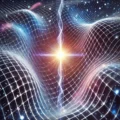Known for Proving the Existence of Electromagnetic Waves
Introduction
Heinrich Rudolf Hertz (1857–1894) was a German physicist whose groundbreaking experiments provided the first direct evidence of electromagnetic waves, thereby confirming James Clerk Maxwell’s electromagnetic theory of light. His work laid the foundation for modern radio, radar, and wireless communication, and he is commemorated in physics by the SI unit of frequency, the hertz (Hz).
Early Life and Education
Born in Hamburg, Germany, on February 22, 1857, Hertz showed early aptitude in both engineering and the physical sciences. He initially studied engineering at the Dresden Polytechnic but later shifted to physics, earning his doctorate under the supervision of Hermann von Helmholtz at the University of Berlin. His dissertation dealt with the evaporation of liquids and contributed to classical thermodynamics, but it was his later work in electromagnetism that would define his legacy.
Contributions
Hertz’s contributions were both experimental and conceptual:
- From 1886 to 1889, at the Karlsruhe Polytechnic School, Hertz developed experimental apparatus capable of generating and detecting radio waves. These included spark-gap transmitters and loop antennas with resonators.
- He performed a series of precise experiments that ruled out other known phenomena, confirming that the observed effects were consistent only with the propagation of electromagnetic waves through free space.
- In 1887, he demonstrated that electromagnetic waves could exhibit reflection, refraction, interference, and polarization, behaviors analogous to light waves, thereby verifying Maxwell’s theoretical predictions in a conclusive, reproducible manner.
- He discovered what is now known as the photoelectric effect, observing that ultraviolet light striking a metal surface could produce electric currents. Although he did not fully explore this phenomenon, it became critical in the later development of quantum theory.
- His findings were compiled in his influential publication “Untersuchungen über die Ausbreitung der elektrischen Kraft” (“Investigations on the Propagation of Electric Force”, 1892), which became a cornerstone of classical electromagnetism.
Vision
Although Hertz himself did not interpret his results in quantum terms, his work inadvertently touched on phenomena that would later reshape physics. His creation and detection of radio-frequency electromagnetic radiation can be viewed, in retrospect, as a method for producing low-energy photons from energy—a macroscopic, classical precursor to quantum electrodynamics. These photons, although extremely low in energy compared to those in optical or higher-frequency bands, were later understood to be subject to gravitational bending, focusing, and nonlinear frequency mixing in specialized media.
While this deeper understanding remained obscure in Hertz’s era, it prefigured modern interpretations of photon behavior, wave-particle duality, and energy quantization. The legacy of his techniques continues to inform the design of precision instruments and theoretical models in electromagnetism and photonics.
Legacy
Despite dying prematurely at the age of 36 from granulomatosis with polyangiitis, Hertz’s legacy is immense. The unit of frequency—one cycle per second—was named the hertz (Hz) by the International Electrotechnical Commission in 1930 and officially adopted by the SI in 1960.
He is widely regarded as a foundational figure in electromagnetic theory and experimental physics. His name is engraved not only on textbooks and instruments but also in the technologies of the wireless age he helped create.
